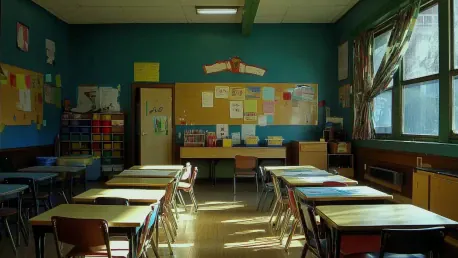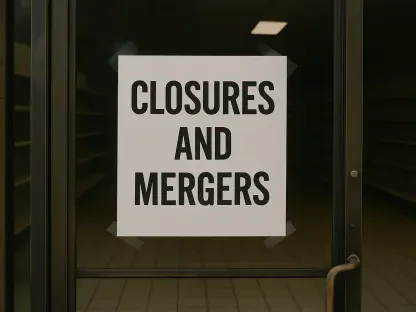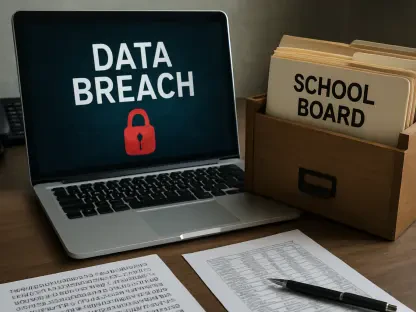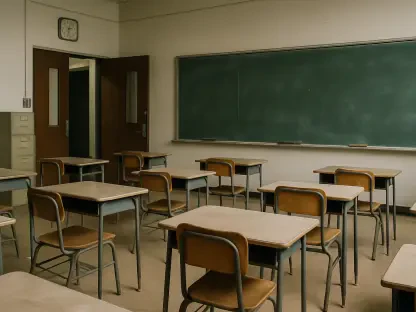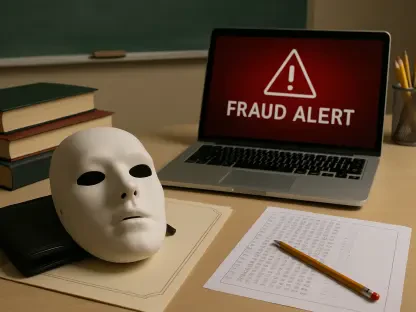The legislative action taken by the Iowa Senate on school funding recently culminated in the passing of Senate File 167. This critical piece of legislation determines the State Supplemental Aid (SSA) rate for K-12 public schools for the coming fiscal year. With a 2% increase agreed upon after extensive negotiations, questions remain about whether this boost will suffice to meet the educational needs of Iowa’s public school students.
The Legislative Journey
The Proposal and Negotiation Process
Delving into the detailed proposal process reveals a rigorous landscape where Senate Republicans and House representatives engaged in prolonged and intricate discussions to finalize the funding increase. The decision to endorse a 2% hike came after a series of intense debates and policy scrutiny. These negotiations sought to balance various viewpoints and ensure the funding model aligned effectively with both educational needs and fiscal reality.
The 2% increase reflects the culmination of these efforts, yet the journey toward agreement also illustrated significant political contention. At the heart of these discussions were opposing views about how much support Iowa’s public schools required versus the state’s capacity to finance such commitments sustainably. The tension between immediate educational necessities and long-term fiscal health underscored the complexity of the legislative process. Various amendments and counter-proposals highlighted the push-and-pull dynamics typical of legislative policymaking, illustrating the challenging balancing act faced by the lawmakers.
Republican Strategy and Amendments
Key to the Republican strategy was ensuring sustainable and responsible funding, a principle that was clearly reflected in the final legislative amendment. This amendment notably removed a one-time $22.6 million appropriation initially proposed by the House and halved the rise in state cost per pupil from $10 to $5. These changes indicated the overall trend towards balancing educational funding requirements with realistic financial forecasts.
Republicans aimed to set limits that aligned with state financial projections while maintaining a focus on providing supportive and sustainable funding for school districts. The adjustments made in the legislative amendment mirrored broader fiscal strategies that prioritize long-term financial health over temporary boosts. This approach intended to avoid over-promising financial allocations that could strain the state’s budgetary commitments in the future. Ultimately, the Republicans’ method underscored a cautious perspective, advocating for a measured increase that encapsulates a blend of current educational needs and foresighted fiscal planning.
Political Discord
Republican Perspectives
Republican legislators have fervently defended their approach, arguing that their strategy presents the best blend of supporting educational choice, maintaining state budget priorities, and ensuring that promises made are sustainable. They believe that the funding model supports individual student needs effectively by accommodating diverse educational choices, including private school programs.
The Republicans’ commitment to a responsible fiscal policy extends beyond immediate financial allocations, aiming to prevent economic instability down the road. The emphasis on ensuring fiscal promises are kept rather than overextending the budget reflects a broader legislative philosophy that values long-term stability. This stance is often framed within the context of advancing educational choice, positing that well-balanced funding strategies can offer robust support for various schooling options while still adhering to prudent financial management.
Democratic Concerns
In stark contrast, Democrats have raised significant concerns regarding the adequacy of the 2% SSA increase. They argue that this limited boost risks pushing many school districts into budget constraints that may require property tax hikes, staff cuts, and reductions in school programs. Their viewpoint emphasizes the dire need for more generous funding to meet the growing demands and inflationary pressures affecting public education.
Democrats contend that the modest increase is insufficient to address the myriad challenges faced by public schools, particularly those that serve economically disadvantaged communities. They highlight the potential adverse effects of constrained budgets, including larger class sizes and the inability to maintain essential educational programs. The Democratic perspective focuses on ensuring equitable funding across all school districts, stressing that comprehensive funding is essential to support quality education for the vast majority of Iowa’s students, who rely on public schools for their educational needs.
The Broader Impact
Calculations and Projections
Senate Republicans have displayed a level of optimism in highlighting an overall increase of $238.1 million for K-12 schools, including fiscal allocations for public schools, the ESA program, and charter schools. They argue that this substantial sum adequately covers various educational facets, aiming to provide support across different schooling options.
Nonetheless, Democrats have spotlighted the potential financial strain and ramifications for public school students, asserting that these projections might overestimate the actual benefits. They caution that the anticipated funds may fail to meet the rising costs attributed to inflation, unfunded mandates, and evolving educational needs. The discord over financial projections reflects deeper concerns about whether the funding increase will sufficiently support public schools’ operational and developmental requirements, prompting ongoing debate about the efficacy of the allocated resources.
The Education Savings Account Controversy
Central to the broader funding debate is the reallocation of substantial resources to the Education Savings Account (ESA) program. With its expansion set to accommodate all students irrespective of family income, Democrats argue that prioritizing ESA funding over robust support for public schools essentially sidelines the majority of Iowa’s students. This key point of contention underscores the ideological divide between legislative factions.
The ESA program’s growing influence within educational policy raises pressing questions about equity and access. Democrats assert that funneling considerable funds into programs benefiting private school choices disproportionately favors affluent families and diminishes resources critical to public schools. This shift could exacerbate disparities in educational quality and accessibility, reflecting broader societal inequities. The controversy encapsulates a fundamental debate about the role of public versus private education, highlighting the clash between choice-driven policies and the need for inclusive support systems.
Long-Term Considerations
Balancing Educational and Fiscal Needs
The ongoing discourse encapsulates a larger debate about balancing immediate educational requirements with sustainable fiscal policy. Ensuring equitable support for public schools while exploring educational choices remains a core challenge. Lawmakers must navigate complex considerations to craft policies that address short-term educational demands without compromising long-term fiscal health.
Striking this balance involves acknowledging the multifaceted nature of educational funding, wherein equitable distribution and responsible fiscal management coexist. It requires a nuanced approach that values both the immediacy of educational support and the foresight of economic stability. The legislative decision-making process thus becomes a pivotal battleground for shaping Iowa’s educational landscape, reflecting broader priorities and values within the realm of public policy.
Future Outlook
The Iowa Senate recently passed Senate File 167, which is a pivotal piece of legislation addressing school funding. This law sets the State Supplemental Aid (SSA) rate for K-12 public schools for the upcoming fiscal year. After considerable negotiations, a 2% increase in the SSA rate was approved. However, this decision has sparked a debate about whether this increase is adequate to meet the needs of Iowa’s public school students.
While the 2% boost is a step forward, critics argue that it may not be sufficient to cover rising educational costs, including teacher salaries, classroom resources, and support services. The decision reflects ongoing tension between the state’s budget constraints and the goal of ensuring quality education for all students. With this increase, schools might struggle to address issues such as aging infrastructure, outdated technology, and expanding student populations. The success of this funding measure will likely be closely monitored by educators and policymakers to assess its impact on the overall quality of education in Iowa’s public schools.
